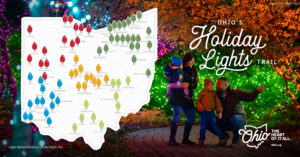Chow Line: Water, other nonsugary drinks best option for kids

My children used to drink a lot of high-sugar soft drinks. A few years ago we cut back, limiting them to one a day. But I saw something recently that makes me think even that might be too much. What is the recommendation?
The U.S. Dietary Guidelines recommends that people consume less than 10 percent of their daily calories from added sugars. The guidelines also recommend that people either avoid sugar-sweetened drinks from their diet overall, or at the very least, limit the amount of sugary drinks they consume.
Other organizations, such as the American Heart Association, say kids shouldn’t consume more than 100 calories a day of added sugar. The group further recommends that children limit their consumption of sugary drinks to 8 ounces a week.
But the reality is, many kids are drinking too many sugary drinks in a given day. In fact, the Centers for Disease Control and Prevention’s National Center for Health Statistics reports that about two-thirds of kids drink at least one sugary drink on a given day. Nearly 30 percent drink two or more sugary drinks a day, according to the most recent findings released in January.
This is a concern because sugary drinks have been linked to a host of health problems in both kids and adults. Issues such as cavities, obesity, heart disease, nonalcoholic fatty liver disease, high cholesterol and type II diabetes have all been linked to the consumption of sugary drinks. In fact, over 90 studies have linked sweetened beverages and children’s weight problems.
So what should a parent or caregiver to do?
The best option for thirsty kids is to offer them water first. You can try these tips offered by Children’s Hospital Colorado to get kids to swig away:
- Use frozen fruit in place of ice cubes.
- Infuse the water with flavor by adding fruits like berries, cucumbers, lemons and limes.
- Visit https://sodapopcraft.com to find out how you can make your own, healthier soft drinks at home.
- Freeze ice cube trays with berries to add to water to keep it cold.
- Provide your child with his or her own special drinking cup.
- Buy 4- to 8-ounce water bottles that are easy for kids to hold and drink.
- Teach and encourage kids to use the faucet to fill their cup. You can even look into installing an water dispenser to make it even easier for them.
- Set up a reward system for drinking more water. Give your child a reward sticker for drinking his or her water or do a special dance when they consume their water.
- Drink more water yourself.
- Carry a water bottle.
- Freeze some freezer-safe water bottles for ice-cold water all day long.
- Choose water instead of other beverages when eating out. This not only will save you money but you will also lower your caloric intake.
Also, get to know what’s in the drinks kids consume. Read the labels. These are just some of the words that indicate your beverage is a sugar-sweetened drink, says the CDC:
- High-fructose corn syrup
- Fructose
- Fruit juice concentrates
- Honey
- Sugar
- Syrup
- Corn syrup
- Sucrose
- Dextrose
These guidelines from an expert panel convened by the Robert Wood Johnson Foundation in 2013 are also helpful recommendations for children ages 2-4:
- Milk: Offer 8-ounce servings of unflavored, low-fat or nonfat milk and calcium- and vitamin D-fortified soy beverages. Keep in mind that dairy consumption continues to be important at ages 4-18 years, when bone growth accelerates.
- Juice: When offering juice, limit it to 4-ounce portions of 100 percent fruit or vegetable juice or fruit juice combined with water, with no added sweeteners. The juice should also have no more than 70 mg of sodium per portion.
- Offer beverages that are free of synthetic food dyes, stimulants such as caffeine, and other additives such as electrolytes or artificial flavors.
- While it may be a challenge to lessen kids’ desire for sugary drinks, doing so now will benefit your children for years to come.
Chow Line is a service of the College of Food, Agricultural, and Environmental Sciences and its outreach and research arms, OSU Extension and the Ohio Agricultural Research and Development Center. Send questions to Chow Line, c/o Tracy Turner, 364 W. Lane Ave., Suite B120, Columbus, OH 43201, or [email protected].









